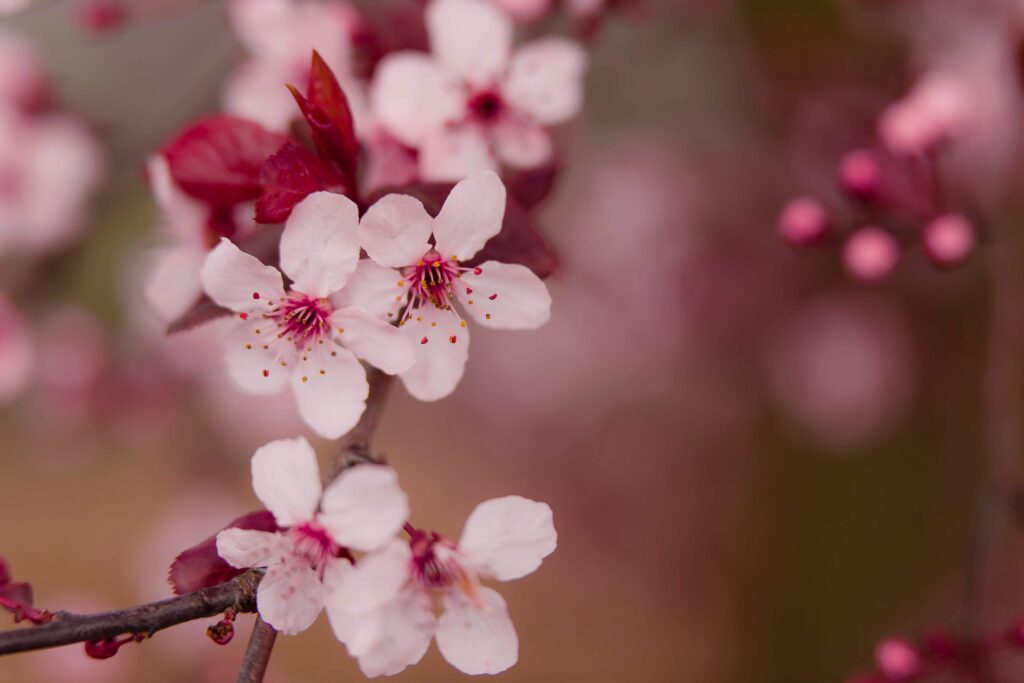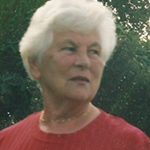Tish Davis
The Sound of the Song
Commentary on Patricia Prime’s Tanka Prose “White & Red”

Photo by Tabitha Mort:
Patricia Prime is no stranger to the Japanese classics. Co-editor of the New Zealand haiku journal Kokako and a longtime contributor to the haiku community as an editor, reviewer, and judge, she is also a widely published poet who has written in various forms—including tanka prose. In her commentary “White and Red: My Beginnings in Tanka Prose,” she notes that after purchasing a copy of Love Songs from the Man’yoshu, “a couple of tanka stayed in my mind, particularly Yamabe Akahito’s tanka written in the 8th century.”
the plum blossom that I thought I would show to my man cannot be distinguished now from the falling snow Yamabe Akahito
(Love Songs from the Man'yoshu, Vol. 8, 1426)

Prime’s affinity for this tanka was inspirational. Already experienced in writing prose poems and haibun, she believed she could follow Yamabe Akahito’s verse with some prose of her own, to add a further dimension to the poem.
And this is where her song begins . . .
White & Red
The plum blossom
that I thought I would show to my man
cannot be distinguished now
from the falling snow
Yamabe Akahito
Love Songs from the Man’yoshu, Vol. 8, 1426spring
the snow falls softly
on white blossoms
this evening alone —
how cold it is
a sprig of flowers
I pick to place in
an emerald vase
bends under the weight of snow
fallen in the nighta serene painting
white on white
not the red
of plums that will ripen
when we meet in autumn
I admire the flowers
the faintest tick of snow
against the window
red roses sprinkled
on a white duvet
Nightfall—I approach the house. Through the lit window I see a man in a cashmere jumper, a woman in a white evening dress with a string of pearls around her neck. Her hair the black of a raven’s wing, her lips painted scarlet. They sit side by side in front of the piano, playing Mozart with two hands—their free hands around each other’s waists. Discarded outer clothes in a heap beside the fire. On a table, an open bottle of red wine and two glasses. . . I stand watching these two people immersed in each other. They’re friends of mine, arrived early for dinner. I’d left the door open when I went to gather the blossoms for a table piece. They’ve let themselves in—two people playing solely for each other.
By opening “White & Red” with Yamabe Akahito’s poem, Prime introduces readers to a mood of disappointment. The plum blossom that Akahito wanted to show her lover is now unrecognizable due to the weight of snow.
There is also snow falling in Prime’s first tanka.
early spring
the snow falls softly
on white blossoms
this evening alone—
how cold it is
The sibilance of the “s” in the first three lines could be an introduction to romance or the newness of a relationship, but, in lines four and five, Prime reveals that this scene triggered a sense of aloneness. This is further emphasized by the assonance in the “o” in alone and cold.
The tanka that follows shows with the poet’s intent to place the flowers—with their allusions to spring and rebirth—inside her home.
a sprig of flowers
I pick to place in
an emerald vase
bends under the weight of snow
fallen in the night
I especially enjoyed the rhyme of place and vase and the implied visual of opening one’s door to spring. However, just as in Yamabe Akahito’s poem, Prime’s fresh blooms never reach the observer’s intended destination. Akahito’s were undistinguishable after exposure to the snow; Prime’s flowers were disfigured as well. In lines three and four, I detect a harshness in the “t” at the end of weight and night when reading this tanka aloud.
The first two lines of Prime’s third tanka convey a moment of tranquility in the snow-covered landscape via the metaphor of a fixed image. Then the tanka shifts and explodes with color and implied passion.
a serene painting
white on white
not the red
of plums that will ripen
when we meet in autumn
The final tanka preceding Prime’s paragraph of prose, the poet uses assonance and onomatopoeia to deepen the mood:
I admire the flowers
the faintest tick of snow
against the window
red roses sprinkled
on a white duvet
The “o” in snow and window creates a feeling of openness as the scene inside the house becomes clear. The onomatopoeia (the faintest tick of snow / against the window) is key to softening what might have been an awkward leap as the window subtly segues to the prose.
Nightfall—I approach the house. Through the lit window I see. . .
The shift to the prose was unexpected, but was successful none the less, due in part to the consistency of the colors white and red and the various outcomes, stated or implied, of the four tanka as each sang its song on center stage.Through this lit window viewed from the outside, Prime shares her observations, writing in a tune that elevates the mood with a scene replete with romance. The poet’s female friend is
. . . in a white evening dress with a string of pearls around her neck. Her hair, the black of a raven’s wing, her lips painted scarlet. . .
The sound is no longer the faintest tick of snow, but two lovers at the piano sitting side by side, playing Mozart with two hands—their free hands around each other’s waists. The scene is full of warmth, the guests’ outer clothing now discarded in a heap beside the fire. On a table, an open bottle of wine and two glasses . . .
As the prose progresses to its conclusion, the poet is still alone outside and at the window. But she closes not with jealousy or sadness, but with a calmness as she observes from a distance:
two people playing solely for each other.
The element of aloneness has been consistent throughout the “little songs” of the tanka. Through her use of poetic techniques, Prime has enhanced the voice in each song to deepen that element, enabling her to expand on Yamabe Akahito’s tanka and bring the reader into a new dimension.
Notes
The essay “‘White & Red’: My Beginnings in Tanka Prose” was first published in Haibun Today, Vol. 5, Number 2, June 2011.
The tanka prose “White & Red” was first published Haibun Today, December 27, 2007. Reprinted by permission of the author.
About the Author

Tish Davis lives in Northern Ohio. Her tanka and related forms have appeared in numerous online and print publications. When she isn’t busy with work and grandchildren she enjoys exploring the local parks with her husband and three dogs.
